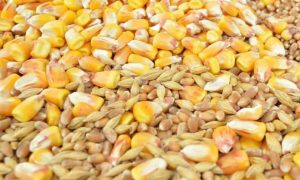Goa : Sugarcane farmers of Sanguem face uncertain future as hopes for Sanjivani factory revival fade

Sugarcane farmers in Sanguem, Goa, are facing a crisis following the closure of the Sanjivani Sugarcane Factory in 2019. With no progress on factory modernization or the promised ethanol plant, many farmers have abandoned sugarcane cultivation. Production has dropped sharply, and younger generations are discouraged from farming. Farmers, facing reduced financial support and difficulties switching to other crops, are planning to meet with government officials to request continued compensation, which is set to end this season, until the factory resumes operations.
Sanguem: Displaced once for the construction of the Selaulim Dam, farmers in Sanguem taluka now face an even greater challenge — the survival of sugarcane farming itself.
The closure of the Sanjivani Sugarcane Factory in 2019 has left hundreds of sugarcane farmers in limbo. Despite government assurances to modernize the facility or set up an ethanol plant, no concrete action has been taken, leaving the future of sugarcane cultivation in doubt.
Sugarcane farming in Sanguem began when villagers from Curdi, displaced by the Selaulim Dam project, resettled in Wadem and Valkini. Many displaced families turned to sugarcane cultivation, making Sanguem the state’s leading sugarcane-producing region.
But with the Sanjivani Factory no longer operational, farmers have had to make tough choices. “In the last five years, around 100 sugarcane farmers in Sanguem taluka have abandoned sugarcane farming,” said Francisco Mascarenhas, a progressive farmer and executive member of the All-Goa Sugarcane Producers Association. “Of the 700 producers left, many have lost interest in cultivating sugarcane.”
The impact is clear. According to Mascarenhas, sugarcane production in Sanguem has dropped sharply, from 28,000 tonnes during the 2019-20 season to just 10,000 tonnes in the current crop season.
The uncertainty has also discouraged younger generations from considering farming a viable livelihood. “The government tells the youth to take up farming, but how can we encourage them when even existing farmers are unsure of their future?” asked farmer Josinho D’Costa.
Switching from sugarcane to other crops is not a simple task, Mascarenhas explained. “Farming is not like other businesses where you can just switch products. It takes time and hard work to prepare the land for a new crop. The government must consider this when asking us to switch crops,” he said.
Another option, coconut farming, comes with its own set of challenges. “Monkeys destroy most of the coconuts before they can be harvested,” Mascarenhas added.
The closure of the factory has also cut off access to financial support from banks and cooperative societies. “Earlier, banks would grant loans based on sugarcane production,” said D’Costa. “But since the factory shut down, banks refuse loans because they think we won’t be able to repay them.”
With little hope for the factory’s revival, D’Costa has reduced sugarcane production and shifted to growing other crops. “I had no choice. There’s no guarantee Sanjivani will ever restart,” he said.
The state government had agreed to provide compensation for five years to help sugarcane farmers cope with the closure, but that period is set to end this season. Concerned about their livelihoods, farmers plan to meet at the Sanjivani Sugar Factory on December 10 to demand the continuation of compensation payments until the factory resumes operations.
“We are preparing a memorandum for Chief Minister Pramod Sawant and the agriculture minister, requesting them to continue the compensation payments,” said Mascarenhas. “We still have hope that the factory will restart and bring back better days for sugarcane producers.”
To read more about Sugar Industry continue reading Agriinsite.com
Source : Chinimandi
















